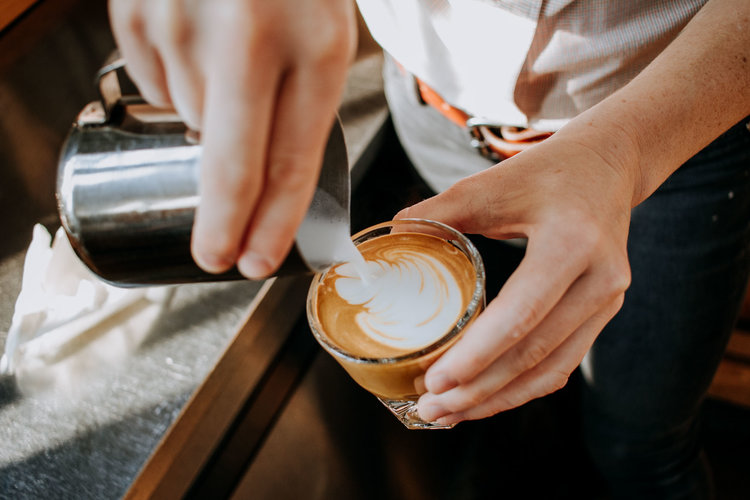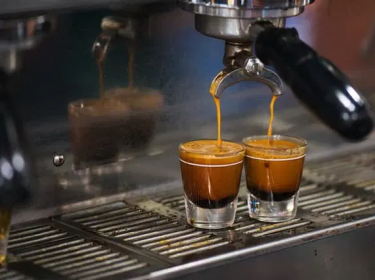
Someone once said that Italian coffee is the best in sunny Italy. The sun and nature are big factors. I would like to add that Italians invented really beautiful coffee accessories. Without it, the world of coffee, espresso, cappuccino, latte and many other coffee pleasures would not be the same.
Is coffee really important to Italians?
For Italians, coffee is more than just strong, aromatic coffee. You can spend a lazy morning with the morning paper in hand at a coffee shop in the local square, or grab a quick shot of bread for breakfast on your way to work. This is a real celebration of the start of the day that Central European residents experience only during holidays. And while coffee probably originated in Ethiopia (as you’ll see in the text), it’s the Italians who have contributed most to the development of one of its branches, espresso-based coffee.
A brief history of the mocha pot, from cafes to homes
The Moka Pot was invented by Alfonso Bialetti in his 1933 year and he became one of the most popular and famous breweries in the world. Legend has it that the Moka Pot was inspired by a modern washing machine that functions similarly to a coffee maker.
The heat pushed the soapy water up through the central “cone” and spilled over the laundry.
The Moka Pot changed the way Italians thought about coffee. Its appearance coincided with 1930s crisis, for which Italians were keen to drink their morning coffee at home rather than in cafes. Before that, espresso was the quintessential beer drunk only outside one’s four walls. Although it doesn’t have as high an extraction rate as an espresso machine with a portafilter due to the significantly lower water pressure, the moka pot is a popular alternative for preparing a classic espresso.
The popularity of this little device is evident in the numbers. Up to 3 mocha pots are sold every minute.
All Italian coffee – espresso, cappuccino, latte…
Many coffee-related terms come from Italy. Espresso literally means ‘squeeze out’ in Italian and is a simple way to describe how coffee is made. There is also the expression espressivo, which means “expressive”. I think you’ll agree that both are appropriate.
A latte macchiato, on the other hand, is, of course, coffee with a milk stain. Classic coffee with milk is called latte. There is an even more interesting story about cappuccino. There are many legends about the invention of this beer, but the name itself comes from the word for the Capuchin Order (from Italian – capuchin), a monk. The combination of espresso color and milk froth is very similar to the color of a monk’s hood. The Italian word for this type of food is just ‘cappuccino’, hence the name of the whole order.
You can’t start without an espresso machine!
The espresso shot is the basis of all non-pour-over coffee and is the purest form of this coffee. Around 1901, thanks to the innovations of the Industrial Revolution, the first version of espresso appeared in cups. Originally, the idea of espresso was to create a brew that could be prepared fast. Milanese inventor Luigi Besara patented an espresso machine with group heads that allows a portafilter to be inserted into the coffee. In 1905, this patent was acquired by Desidero Pavoni, who began manufacturing the first mass-produced espresso machine with a portafilter, The Ideale.
For starters, the portafilter La Marzocco, the sole king of his espresso machines, was also designed in Italy. In 1927 Giuseppe and Bruno Bambi founded a company in Florence. Still, the first La Marzocco coffee machine was nothing like the one we use today.
But it was Lahi Marzocco who first conceived and patented the idea of a horizontal boiler for the espresso machine we know today.
After the war (the patent was not renewed), all manufacturers began producing espresso machines with horizontal bowls (modeled after La Marzocco’s invention).
He has also contributed to the development of an espresso machine for one Italian brand. Gaggia was founded in 1930 in Milan. In 1938 Achille Gaggia patented a new type of espresso machine. This is because, unlike predecessor, Gaggia used a piston mechanism in that project, forcing high-pressure water through the ground coffee to prepare the ideal creamer-topped espresso in 15 seconds. It was an innovative design.
ThiscremaisthehallmarkoftheGaggiabrand.Legendhasitthattheinitialreactiontocoffeecremawaslessthanenthusiastic.
Guests asked: “Where does the foam in my coffee come from?” That’s why Gaggia called her coffee Café Crema, not Espresso. Coffee with crema came to be recognized as true espresso sometime after machines with high pressure and crema became commonplace in coffee shops.
At the time, people were beginning to believe that you couldn’t make a good espresso without a good grinder. The history of Eureka began in 1920 in Florence. The company was founded by Aurelio Conti and, like La Marzocco, is primarily associated with the professional coffee scene. However, as interest in coffee grows, it is gaining popularity among home baristas.
Is Italian Coffee the Best?
The history of coffee is closely tied to Italy, and we subconsciously think that Italian coffee is the best. At least they say so… Italian coffee is coffee roasted in Italian roasters, not coffee grown there of course. Because Italian roasts are typically darker, Italian coffees (especially for light roast specialty coffee lovers) can become bitter and monotonous in taste. That’s why we like to add milk.
But the days of classic espresso are long gone. Even Italians are keeping up with the times, looking for a compromise between the classic taste of espresso and a more delicate roast to bring out more flavor from their coffee.







